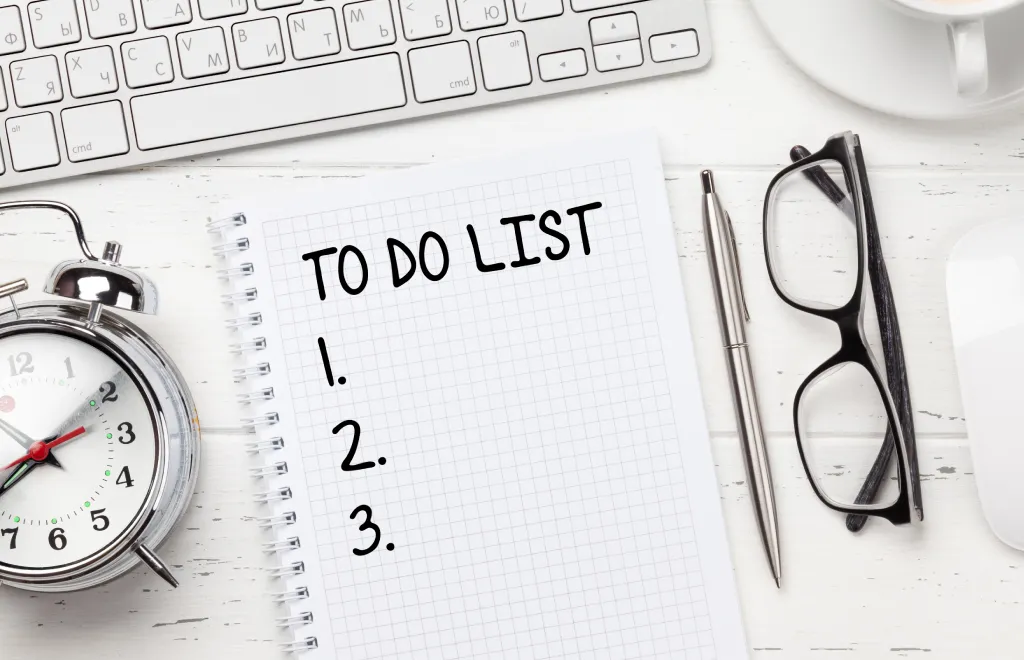Como lidar com o estresse no trabalho: 14 estratégias
Work is one of the most stressful environments, no matter if you like it or not. Workplace stress usually stems from high workloads, tight deadlines, and lack of control over tasks. Job insecurity, poor work-life balance, and conflicts with colleagues add to the excessive pressure.
How to deal with stress at work? You need to learn stress management techniques and work habits that will help you alleviate tension and reduce behavioral symptoms of chronic stress so that you stay mentally healthy, no matter what project you are working on at the moment.
Below you will find some of the most effective stress management techniques to cope with stressful work environment. Pick your own and stop work stress for good.
What is work stress?
According to the Center for Disease Control and Prevention (CDC) and the United States Government, “Work stress is the harmful physical and emotional response that occurs when the job requirements do not match the worker’s capabilities, resources, or needs. Job stress can lead to poor health and even injury. Chronic work-related stress can lead to mental health problems such as anxiety and depression.”

Common work-related stress factors
Stressful situations can happen anywhere, but work environment is extra susceptible to that. Why does work make people so stressed? Let’s take a look at some of the most common work-related stress factors:
- Carga de trabalho excessiva
- Long hours, usually unpaid
- Low salaries
- No or little opportunity for growth
- Lack of support
- Bad relationships with colleagues or leadership
- Unclear performance expectations
- Workplace bullying
- Unhealthy workplace culture
According to the 2022 Gallup’s State of the Global Workplace, the pandemic and its aftershock continue to disrupt the workplace. Only 32% of working people across the globe say they’re thriving, and 43% report high levels of daily stress.
What are the negative effects of chronic stress at work?
Long-term exposure to chronic stress caused by work-related stressors can lead to:
- Decreased productivity, missed deadlines and opportunities
- Absenteeism and increased turnover
- Negative thoughts and negative emotions in the team
Most importantly, however, long-term stress impacts employee health, causing:
- Heart disease
- Anxiety
- Muscle tension
- Sleep disturbances and other serious health issues.
How to deal with stress at work and improve your mental health
1. Identify the source of the problem
Why are you stressed at work? Can you pinpoint specific situations that cause chronic work stress? Finding the source of work pressure is the first step to reduce symptoms of stress and avoid burnout.
A good method for finding the reasons why you feel stressed is to use a diary. Start by simply noting down all the moments and work-related activities that make you feel drained. Next, after a week or two, simply go through your notes to identify patterns. By knowing the source of the problem, you can manage it more effectively.
2. Improve time management and time estimation
Work stress is often caused by being overwhelmed with excessive workload. Juggling too many tasks depletes you of energy, makes you work extra hours, and prevents you from getting a good night sleep. You are constantly thinking about the unfinished tasks, and one project chases the next one.
In short, 24 hours a day seems to be simply not enough. Sounds familiar? If there is not much hope that the number of tasks will go down, you need to focus on improving your time management skills. Only by implementing techniques like time tracking, timeboxing, or “eat the frog“, will you be able to squeeze in more tasks in your work week and reduce stress related to the big workload.
- Read more about time management strategies.

3. Create your own pre-work ritual
In a chaotic workplace where each day brings new challenges, having a grounding routine at the start of your day can be invaluable. Establishing a pre-work ritual can provide this stability.
Mental health professionals recommend creating a morning ritual that includes planning your day, following a healthy diet, engaging in a short physical activity, and setting aside personal time for activities like journaling.
This predictable routine helps you begin the day on a steady note, preparing you to tackle the work challenges ahead.
4. Do deep breathing exercises to relieve stress
Breathing exercises are highly effective for immediate stress relief. They work particularly well during moments of anxiety and panic attacks, providing instant calm.
Additionally, research published in Frontiers in Human Neuroscience shows that deep breathing exercises also help reduce stress in the long term. By incorporating breathing meditation into your daily routine, you can prevent and better manage stress over time.
One simple method to start with is box breathing. Begin by sitting up straight and exhaling fully. Then slowly inhale for a count of four, hold your breath for four, and exhale for four. Repeat this cycle a few times to experience the benefits.
5. Learn to prioritize
Prioritizing is crucial if you want to reduce work stress. By implementing best prioritization techniques you can better manage your workload and focus on what’s most important. At the same time prioritization helps to work more efficiently without causing excessive stress.
How to prioritize? Numerous techniques exist, including the RICE method, the time management matrix, or the MoSCoW prioritization method. I strongly recommend the time blocking technique, too.
Implementing prioritization techniques aims to identify which tasks can be delegated or postponed. This can help reduce workload and free up time and mind.

6. Take short breaks
Taking short breaks might sound basic, but many professionals neglect to do it regularly. Step away from your desk for a walk, chat with coworkers, or play a quick game – anything to interrupt long periods of work.
Regular breaks throughout the day give you a chance to recharge and handle stress, ultimately improving your well-being and productivity.
Try our free Pomodoro timer if you struggle to plan regular breaks during a workday.
7. Go on holiday
Short breaks are important but so are longer holiday periods. Continuous work without breaks can lead to chronic stress, impacting both your mental and physical health. Taking time off allows you to relax and unwind, effectively lowering stress hormones like cortisol.
This break from routine and responsibilities helps rejuvenate your mind and body, making you more resilient to stress when you return to work. Research consistently shows that employees who take regular vacations report lower stress levels, increased job satisfaction, and better overall well-being.
8. Set boundaries and define expectations
Setting boundaries and defining clear expectations are vital strategies for reducing stress in the workplace. You protect your emotional and mental well-being by setting boundaries, such as knowing when and how to say no to additional tasks that could overwhelm you.
Additionally, having clear expectations about your role and responsibilities prevents confusion and uncertainty, which are common sources of stress. When you understand what is expected of you and can realistically plan and prioritize your tasks, you feel more in control and capable of managing your workload effectively.
Regularly discussing expectations with your supervisor ensures alignment and reduces the likelihood of misunderstandings or sudden changes that can lead to stress.

9. Move your body to shake off the workplace stress
Sports activities provide another powerful stress-management technique. Exercise releases endorphins, which are natural mood lifters, and reduces levels of stress hormones like cortisol. Engaging in sports also promotes better sleep, which is crucial for managing work stress.
Additionally, exercise provides a break from work-related pressures, allowing you to clear your mind and gain perspective. Regular physical activity strengthens your resilience to stress over time, improving both your physical and emotional health.
10. Create a friendly work environment
A stressful work environment negatively impacts health and leads to decreased productivity, increased errors, and higher rates of absenteeism. Factors such as physical discomfort, often caused by uncomfortable chairs and lack of natural light, contribute significantly to stress levels at work.
To mitigate this, prioritize creating a quiet, comfortable, and soothing workspace. Exposure to natural elements like natural light and greenery has been shown to enhance well-being and reduce the risk of burnout.
Incorporating nature-inspired decor can further alleviate anxiety and stress, boosting happiness and energy levels among employees.

11. Stop multitasking right now
Multitasking can significantly contribute to work-related stress due to its inefficiency and detrimental effects on productivity. While juggling multiple tasks simultaneously may seem like a way to get more done, it often leads to lower-quality outcomes and longer completion times.
Constant context switching not only wastes time and energy but also hampers concentration and decision-making abilities. Improving organizational skills and focusing on one task at a time allows for higher-quality work completed more efficiently, ultimately reducing stress levels.
12. Get enough sleep and eat healthy
Adequate sleep allows your body and mind to recover, improving resilience against stressors throughout the day. Likewise, eating nutritious meals supports overall well-being, providing sustained energy and better mood regulation.
Avoiding vending machine snacks and fast food helps stabilize blood sugar levels, preventing energy crashes and mood swings that can exacerbate stress.
Together, these habits contribute to better stress management, enhancing your ability to cope with work demands effectively.
13. Separate work life and personal life
Achieving a good work-life balance by setting clear boundaries between your work and home life is key to reducing stress. When you establish specific work hours and prioritize time for yourself outside of work, you create space to recharge mentally and emotionally.
This separation helps you unwind from work pressures, allowing for better relaxation and engagement in personal activities.
14. Seek support
Last but not least, don’t hesitate to reach out to trusted friends, supportive coworkers, or even a professional for guidance when you feel stressed. They can offer empathy and fresh perspectives on challenging situations, making you feel less isolated.
Conclusão
Some productivity experts argue that stress can keep people alert and motivated. While this may be true, prolonged stress harms mental and physical health.
To cope with work stress, anticipate and avoid stressors, practice relaxation techniques, and manage your time better. An intentional recovery plan can enhance your performance and well-being.
If stress becomes overwhelming, consider speaking with a mental health professional to develop coping mechanisms and address unhealthy responses to stress.
PERGUNTAS FREQUENTES
What are the main causes of stress at work?
Some of the main causes of stress at work are excessive workload, lack of control over the job, and a toxic work environment, among others.
What are the most common signs of stress at work?
According to the UK’s governmental agency Health and Safety Executive, the most common signs of stress at work are mood swings, loss of motivation, commitment, and confidence, and extreme emotional reactions.
Como o estresse afeta a produtividade no trabalho?
While stress can boost work performance in the short term by releasing adrenaline, it’ll be responsible for draining people of physical and mental energy in the long run. Consequences of that include lack of focus, anxiety, and others. So, in the long term, stress can reduce productivity.
Talvez você se interesse por: